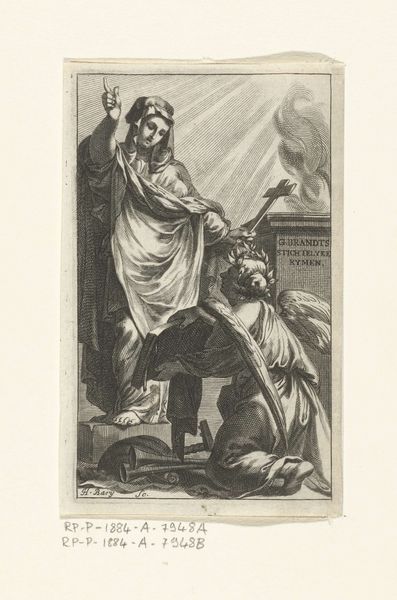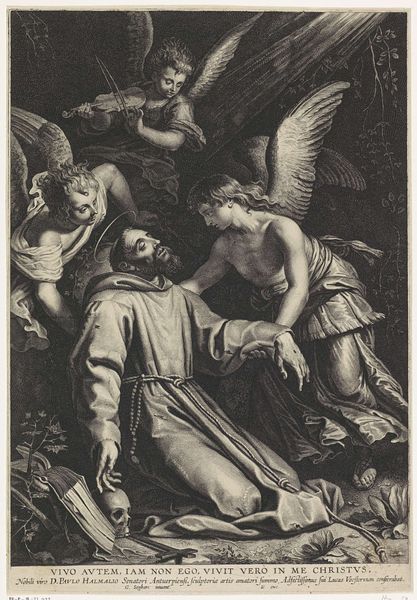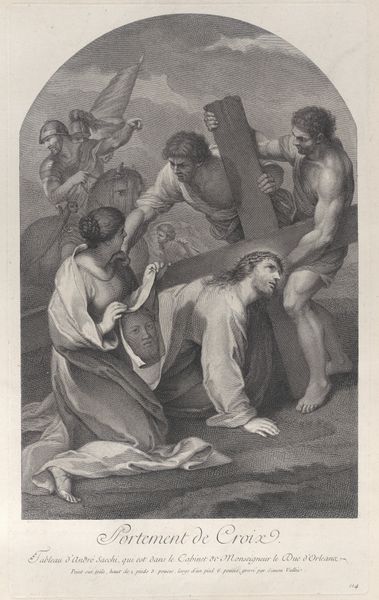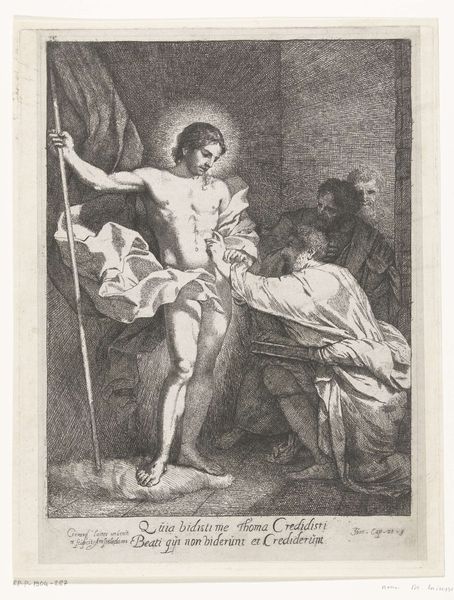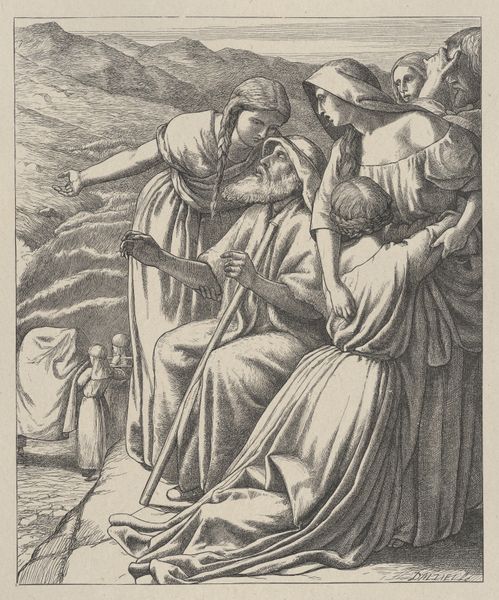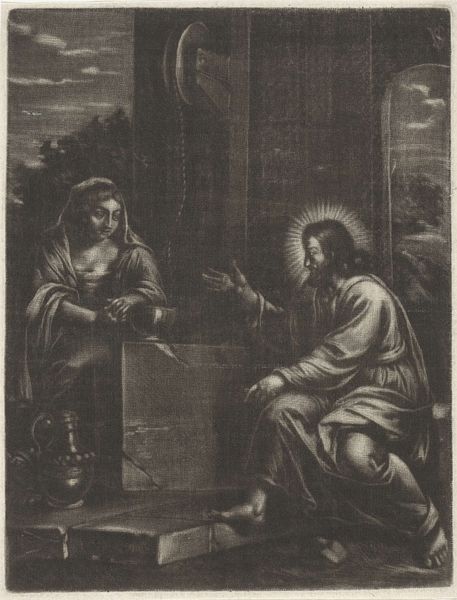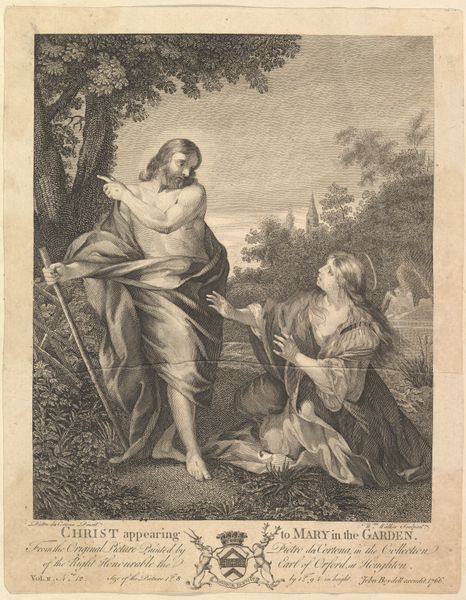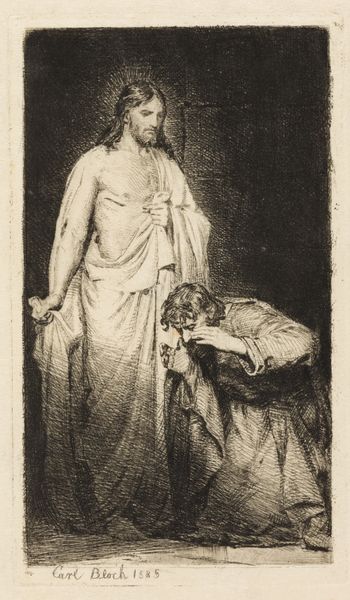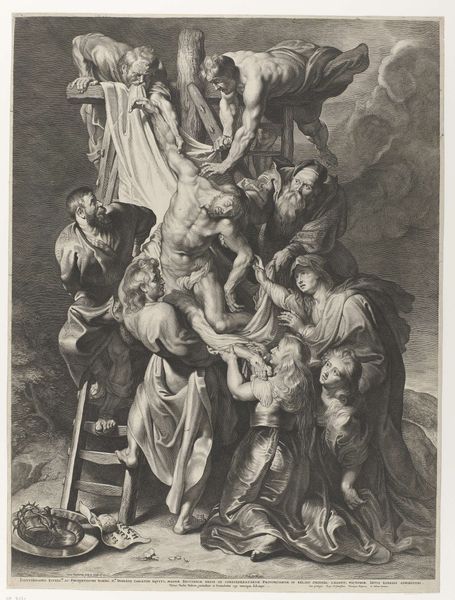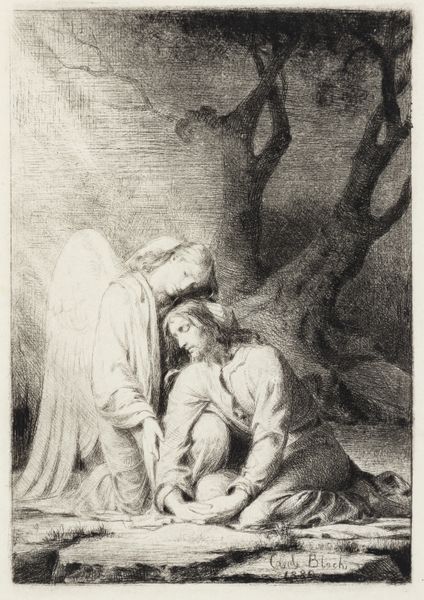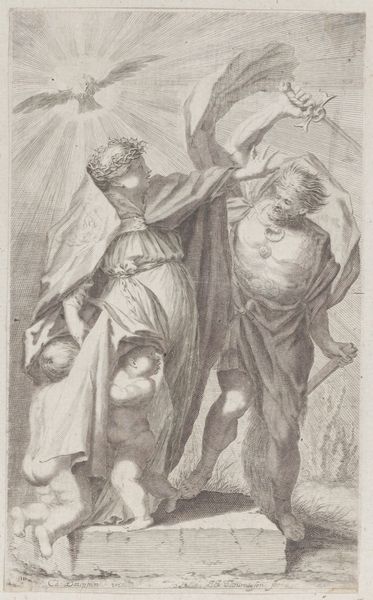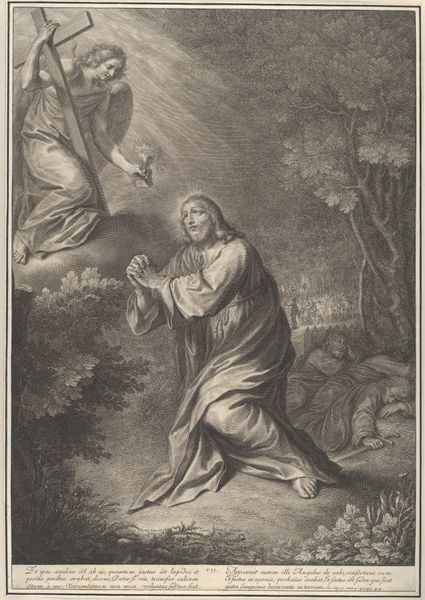
print, engraving
#
baroque
# print
#
figuration
#
portrait reference
#
line
#
history-painting
#
engraving
Dimensions: height 396 mm, width 298 mm
Copyright: Rijks Museum: Open Domain
Curator: This engraving by Lucas Vorsterman I, made sometime between 1624 and 1629, depicts "Christus in de Hof van Olijven," or Christ in the Garden of Olives. It’s currently held in the Rijksmuseum. Editor: The stark contrasts immediately draw me in. There’s a raw emotional vulnerability, almost palpable, rendered in lines that emphasize both detail and overall texture. Curator: Indeed, the technique, typical of Baroque engravings, really accentuates the drama of the scene. It depicts the moment Christ prays in the Garden of Gethsemane, grappling with his impending crucifixion. An angel descends to offer him solace, while his disciples slumber nearby. Consider the sociopolitical context too—art like this during that era often functioned to reinforce religious doctrine, yet it also provides an opportunity to contemplate individual faith in a time of immense political and religious strife. Editor: From a material perspective, think about the process itself. The engraver, Vorsterman, working meticulously with a burin on a copper plate, translating emotion into tangible form through a rather laborious procedure. And notice the deliberate use of hatching and cross-hatching. Curator: Exactly! The strategic manipulation of lines creates a compelling illusion of light and shadow. Editor: And let's not ignore the power dynamics portrayed. We see divine intervention in the form of the angel. Yet, there's also the lonely, burdened figure of Christ himself. The inclusion of the sleeping disciples in the background brings another level to it as well, emphasizing isolation in a community that's ultimately failing to support. Curator: Right, this speaks to a complex tapestry of themes—faith, doubt, divine presence, and human fallibility. Vorsterman successfully captured the tension and fragility inherent in that crucial moment in Christian theology, making it an icon for reflecting humanity’s spiritual struggles. Editor: Looking at this through a materialist lens emphasizes the link between the artist's labor and spiritual contemplation; each delicate mark translates intense, internal turmoil into an artifact. Thinking about all the decisions inherent in such labor shifts my understanding. Curator: Analyzing this artwork from sociohistorical and religious standpoints enhances appreciation, linking artistry, historical influences, and the narratives surrounding religion and society's foundations. Editor: And to view it thinking about production lets us acknowledge both artistry and meaning inherent in devotional iconography from this time period. It underscores its complex interrelations.
Comments
No comments
Be the first to comment and join the conversation on the ultimate creative platform.
